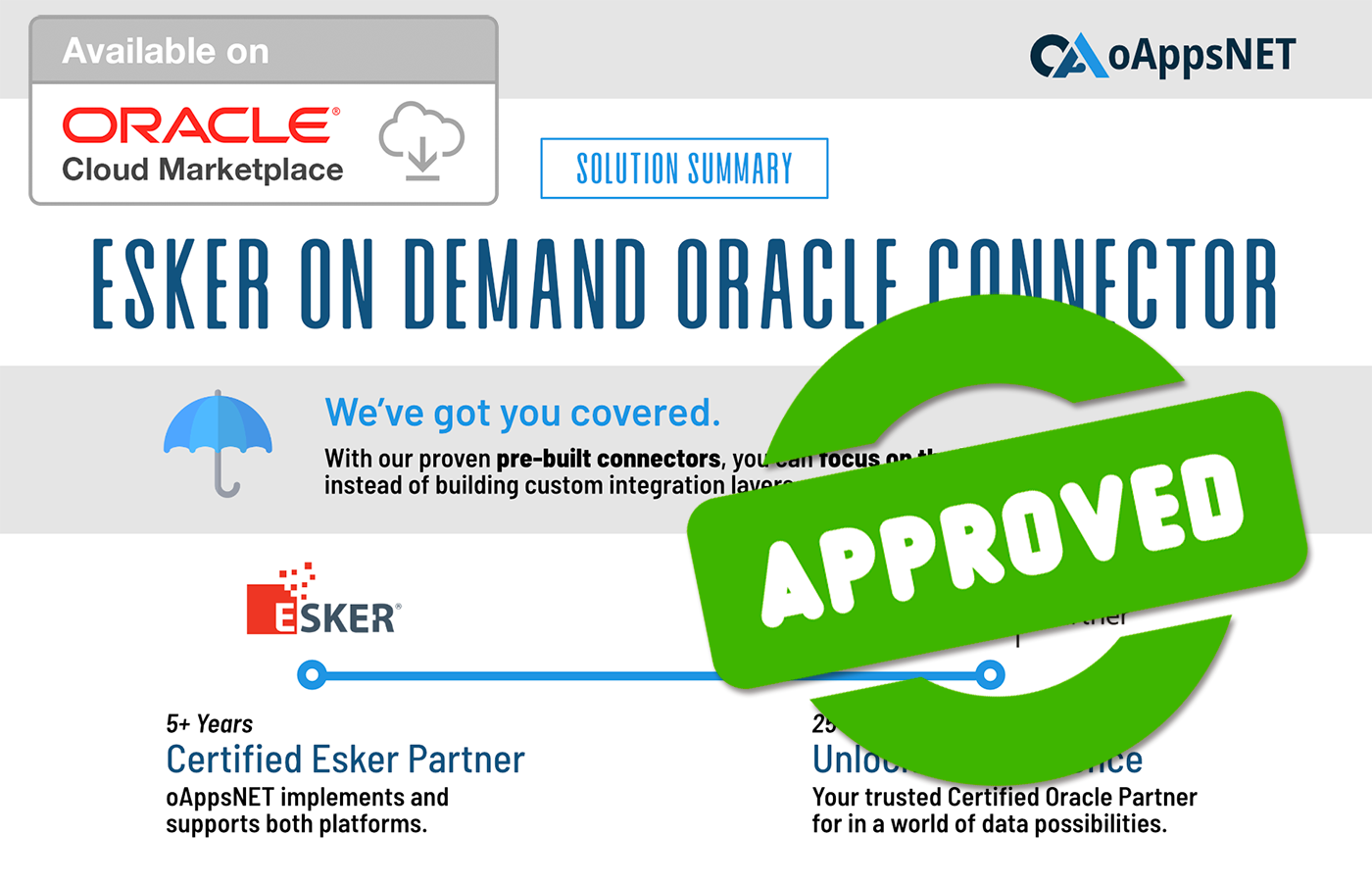
by Sophia Riley | Oct 19, 2023 | Accounts Receivable, Automation
As businesses embrace the era of digital transformation, it’s vital for your company to adopt advanced technological solutions. One trend that’s rapidly growing is accounts receivable automation. In this guide, you’ll learn about the realm of accounts receivable automation and its significance to your enterprise.
What’s AR Automation?
The process of automating accounts receivable involves integrating cutting-edge technology to streamline operational procedures and modernize financial transactions. Managing AR traditionally is labor intensive and demands significant effort.
Consider a scenario where collections department personnel manually email each customer, sending individual account statements with friendly payment reminders. The same individual diligently maintains a comprehensive spreadsheet for all past-due accounts and records every transaction and invoice. They also handle cash application tasks, manually reconciling payments with bank statements. Keeping up with all these tasks while receiving customer orders can be quite challenging.
Thankfully, accounts receivable automation has changed this landscape by substituting manual tasks with technology-driven solutions. The introduction of automation software has eliminated the manual burden and revamped how AR processes are conducted.
How Does AR Automation Boost Efficiency?
Companies should adopt accounts receivable automation because it boosts operational efficiency. By delegating simple and repetitive tasks to software, companies can free their employees’ time to let them concentrate on more impactful and strategic endeavors. This boosts long-term productivity and yields long-term time and cost savings.
Automating tasks such as processing transactions, emailing communication for invoicing, and billing and payment collection leads to natural improvements in efficiency. Companies with automated AR systems are more likely to gain a scalability advantage and expand their operations without needing to allocate more time or additional personnel. This scalable approach enables organizations to work smarter, not harder, as they leverage technology to optimize their workflow.
Another significant benefit of utilizing software in accounts receivable processes is mitigating human error. Implementing automation significantly reduces the likelihood of errors that could have severe consequences in financial matters. Whether it’s a misplaced comma or an extra zero in an invoice, such inaccuracies can trigger disputes, deductions, and other cumbersome challenges you can avoid through automation. Businesses that rely on technology for precise and consistent execution maintain seamless financial transactions and establish a higher level of trust with their clients.
Steps To Automate AR
Managing accounts receivable involves multiple intricate steps that can be optimized through automation. These steps include:
Electronic Invoicing Presentment And Payment (EIPP)
Traditional paper-based invoicing is tedious and time-consuming. EIPP streamlines the invoicing process and delivers them electronically by mail. This automation expedites the invoicing cycle, saving valuable time and resources. Moreover, the inclusion of an online payment portal empowers customers to access their account statements and invoices, monitor new orders, make secure payments, and establish direct communication with the company. Including EIPP in your business model will boost customer satisfaction and cut down manual administrative efforts.
Disputes And Deductions Resolution
Handling disputes and deductions can be a laborious process when managed manually. Adopting automation in this area will let your company swiftly identify and validate disputed charges, leading to timely invoice adjustments. It will also minimize delays in receipt payments, accelerate resolution times, and ensure concerns are addressed promptly and precisely.
Cash Application
Manual cash application is prone to errors. Integrating cash management AR software with your system will let you effortlessly process and post payments from various channels. Automated reconciled accounts will also reduce your chances of errors and expedite payment processing, ultimately leading to improved cash flow management and a healthier financial position.
How To Select An AR Automation Software
Selecting the most suitable AR automation software is a crucial decision that can affect your company’s financial operations. When evaluating options, here are five essential factors you should consider:
Customizability And Scalability
Look for AR automation software that offers flexibility and can be tailored to meet your specific business requirements. A customizable solution will ensure the software aligns seamlessly with your existing workflows and processes. Additionally, opt for a platform that can scale alongside your company’s growth, accommodate increased transaction volumes, and evolve without disrupting operations.
Integration Capabilities
Seamless integration with your current financial systems is essential for a smooth transition to automation. An AR automation software that can effortlessly integrate with your ERP, CRM, and other essential software solutions can be ideal because it will improve data consistency and minimize duplication of efforts. The tool should also be compatible with accounting software for hassle-free implementation and overall efficiency.
Security And Compliance
When handling sensitive financial data, security is of utmost importance. Ensure the AR automation software you select adheres to industry-standard security protocols and follows data protection regulations. It should also have robust encryption measures, multi-factor authentication, and secure data storage facilities to safeguard against cyber threats and maintain your customers’ information.
User-Friendly Interface And Training Support
A user-friendly interface is essential to promote the widespread adoption of automation software among your team. Seek solutions with intuitive dashboards and navigation to minimize the learning curve and maximize productivity. Additionally, check for comprehensive training and customer support offerings. This will enable you to empower your staff with the necessary knowledge and skills they need to make the most of the software’s capabilities.
Reporting And Analytics
Valuable insights from robust reporting and analytics functionalities can help you make informed decisions. An AR automation software that provides real-time data on cash flow, customer behavior, and payment patterns will let you identify trends, optimize processes, and proactively address potential issues. The software you choose should also be able to generate customized reports tailored to your specific metrics and KPIs. Such software will let you effectively track and measure the impact of automation on your business performance.
The Bottom Line
As a beginner, you need to know the intricacies of AR if you want to streamline your financial transactions, optimize cash flow, and develop a strong client relationship. Hopefully, this guide has helped you learn about the role of AR automation in invoice management and payment processing. Include automation in your business today to witness firsthand its tremendous impact on elevating operational efficiencies and driving sustainable growth.

by Sophia Riley | Oct 17, 2023 | Accounts Receivable, Automation
Accounts receivable lies at the core of well-managed accounting because it encompasses vital tasks such as collections, payments, billing, and tracking. A company’s proficiency in nurturing and navigating the AR lifecycle can influence its success or failure. Unfortunately, many businesses remain unaware of the potential hidden within automated AR processes despite their familiarity and widespread usage.
In this guide, you’ll learn about the untapped world of AR automation. Knowing what can be automated and how to automate them will help you streamline your strategy and improve your company’s bottom line.
How Does The Traditional AR Process Work?
The traditional AR process is a manual endeavor that a business manager or accountant handles. This labor-intensive task involves creating invoices, collecting payments, communicating billing information, and tracking the AR cycle. Human error often looms over this process, leading to costly mistakes and delays.
Fortunately, the advent of technology has revolutionized the landscape. Through integrating computers, accounting software, spreadsheets, and emails, the AR process has experienced a leap in efficiency. This has led to increased accuracy, more automation, and a reduced need for manpower. The development of specialized AR software has also propelled automation to new heights. With this software, you can deliver unparalleled efficiency, mitigate the need for overhead costs or additional staffing, and minimize errors.
In the present day, installing an AR automation system may be a substantial investment. However, the returns far outweigh the initial expense. Invoice automation can pay for itself after about six months. This remarkable benefit is just the beginning.
Automating the AR process will also help you unlock greater efficiency and gain valuable insights into your financial operations. With enhanced accuracy and streamlined tracking, you’ll better understand your cash flow and make better decisions. Additionally, you’ll reduce your reliance on manual labor, and your team will become more productive because they’ll focus on more strategic tasks. The AR automation journey represents a transformative step toward financial success.
The Common Challenges You’re Likely To Experience With AR Processes
Before learning the transformative benefits of AR automation, you need to know the common challenges your business will likely face with the processes, including:
The Struggle To Have Invoice Emails Read And Acknowledged
Shockingly, Forbes reveals that about 60% of emails go unnoticed. The infamous “I didn’t see it” excuse is all too familiar, making it difficult to know the status of your communication.
With automated AR services, knowing whether your email has been read is easy. The “client view” feature will deliver the client’s response directly to the recipient’s web browser. This feature can be used for PDF downloads, online payments, file attachments, comments, and more. Integrating a customer portal into your system can also enhance accessibility and let clients quickly respond to invoices. The result? You’ll be informed at every click.
Failing To Be Firm When Requesting Payments
Another prevalent issue is the reluctance to assertively request payments, especially when deadlines pass or payments are continuously late. It’s estimated that about 80% of invoices in the US are overdue by 30 days, adding unnecessary stress and disrupting the budget strategy.
AR automation provides a remedy to this problem. Automating the invoicing process and follow-ups eliminate emotions from the equation. Also, customer portals empower clients with flexible payment options, reducing unintentional missed payments and discouraging intentional delays or excuses.
Payment Excuses
Handling payment excuses is a common headache businesses face during billing and collections. Atradius estimates that customers delay about 50% of payments due to misplaced invoices or inaccurate information. Fortunately, AR automation tools act as a defense against these excuses. Through automation, you’ll achieve accurate invoice delivery and keep track of successful receipts.
Addressing these common AR challenges through automation will liberate your business from cumbersome manual processes and pave the way for smoother financial operations. You’ll also achieve increased accuracy and gain the confidence you need to nurture stronger client relationships, secure timely payments, and steer your enterprise toward sustainable growth and prosperity.
What Does The AR Automation Process Entail?
There are several crucial aspects that you need to consider when switching to an automated process. Now that you know the challenges faced in the AR process, let’s look at some of the solutions that AR automation offers.
Generating Invoices
Complex invoice generation tools form the cornerstone of AR automation. They streamline the invoicing process and customer experience. Through external datasets and built-in templates, these tools will give you the correct billing information according to each customer’s preferences. This personalization will foster your relationship with your customers and expedite payment processing.
Tracking Payments
The laborious manual tracking of every payment can lead to errors. AR automation comes to the rescue by automating the cash application process, letting you effortlessly track and match each price to its corresponding invoice. An ideal AR automation service should provide tools like multi-invoice applications, virtual lockboxes, cash application rules, and remittance acceptance advice. Adopting these features will guarantee you effective and accurate payment processing. It will also free your team from tedious tasks and minimize mistakes.
Automated Collections
Bid farewell to the days of managing collections through sticky notes, spreadsheets, and endless emails. AR automation is designed with collections tools that perform real-time tracking and maintain progress visibility and transparency. Using these features means reducing your dependence on staff overhead and minimizing human mistakes. You’ll also reclaim valuable time and resources that you can use to build other aspects of your business.
Payment Plans
Payment plans are indispensable for companies offering high-value services like medical procedures or legal representation. AR automation should seamlessly incorporate payment plans within a cloud-based invoicing platform. Automating your goals will enhance your financial stability, foster consistency, and increase trust.
Customer Portal
Simplifying payment processes and account management is paramount to AR automation. A customer portal improves collection rates and consistency thanks to its ability to reduce customer service overhead.
Invest in a cloud-based, PCI-compliant customer portal that offers ample customization options that align with your overall customer experience strategy. A user-friendly customer portal will let your clients control their accounts and improve your overall experience.
Subscription Billing
For businesses with recurring revenue models like membership organizations, cloud software providers, or utility companies, automation extends its capabilities to manage billing and subscriptions seamlessly. An automated AR service should offer flexible plan development and management that handles everything from proration to add-ons and contract renewal rules. Features like sign-up pages, extensive customization, and dunning management can boost your subscription business, optimize billing efficiency, and increase subscriber satisfaction.
Simplify AR Processes With Automation
Having gained valuable insights into the significance of AR automation, it’s only natural to seek an automation service that meets your requirements. Fortunately, several companies provide a comprehensive suite of service tools accessible through a cloud-based platform.

by Sophia Riley | Oct 12, 2023 | Accounts Receivable, Digital Transformation
Are you spending endless hours on bookkeeping tasks? Struggling with fragile OCR technology or relying on human transcription can lead to headaches and errors. A Greenback survey estimates that users waste about five minutes to scan, search for or upload one receipt. Imagine a world where your accounting is streamlined, efficient and automated. This is what automated receipts will give you. If you invest in these receipts, you’ll have more time to spend on vital tasks like growing your business and spending quality moments with loved ones. And there’s more. Automated receipts get smarter with every use, learning your preferences and simplifying your financial processes. Here are some questions that will help you determine if investing in automated receipts is a good idea.
Does Your Bookkeeper Know What You Bought Last Month?
Probably not. If they’re using traditional receipt management, maybe they’ve not reconciled or categorized receipts for items you bought from eBay, Amazon and other e-commerce sites. Bank statements and credit card reports may offer some information on what is bought, but they may be limited.
Automated receipts eliminate the need to track receipts and enter data manually. They’re designed to offer a comprehensive view, with product images, shipping information, live links and line items. They can also effortlessly capture all relevant information, categorize expenses and update records quickly.
Automated receipts also keep data in one place. It doesn’t matter whether you’re on a business trip or vacation, you can search for any receipt, and it will show you how you’ve spent your resources. Additionally, it can match your transactions with original receipts and prevent duplicates. Through them, you can interpret large amounts of data and assess the areas you need to make adjustments easily.
Are You Prepared For Auditing?
Facing an audit can be anxiety-inducing for businesses and individuals alike. One wrong move could expose you to financial scrutiny. Fortunately, automated receipt systems have your back. Investing in these receipts will help you keep your records organized and easily accessible. You’ll not worry about frantic searches for missing receipts during an audit because they’ll be securely stored in the cloud, where you can access them anytime. You’ll also have confidence in addressing questions about your financial records with ease.
Moreover, automated receipts can boost your tax compliance. It’s advisable to store receipts for transactions for as long as you can. Unfortunately, many vendors only keep these documents for two years from the purchase date. The IRS publication 583 makes it clear that a tax deduction doesn’t depend only on the document showing the amount paid. You need other documents, such as invoices and receipts, to prove you made a payment. Automated receipts can make it easier to prove this, increasing your chances of compliance. Speaking with a tax attorney or an accountant can help you learn more about tax record keeping.
Do You Have A Team Helping You With Taxes And Books?
Collaborating with a team on manual receipt management can be a logistical nightmare. Miscommunication lost receipts, and delayed updates are some challenges you might encounter.
With automated receipts, your team can seamlessly collaborate, even if they’re spread across different locations. Everybody will have access to the same digital receipts repository, eliminating confusion. You’ll also be able to connect with your accountant or team more efficiently or securely. They’ll be no more worries about duplicate transactions or missing receipts because you won’t enter data manually.
Furthermore, hiring a bookkeeper to correct data entry errors or track lost receipts won’t be necessary. Automated receipts will streamline your workflow, create accurate results and sync with your accounting system with little effort. It will also help your team to instantly upload and share receipts, track expenses, coordinate financial decisions and allocate budgets.
Are Your Receipts Backed Up And Safe?
Data is among the most essential assets that your company owns. However, it’s estimated that companies lose about 12 billion dollars in the U.S. each year due to data loss. You can lose data as a result of a hard-drive malfunction, ransomware attack or a drink spill. If you’re using traditional receipt storage, receipts can fade, be misplaced, or be destroyed in unforeseen disasters.
Protecting your financial data is paramount, and that’s where automated receipt systems shine. These receipts are stored in the cloud and are future-proof, ensuring your data is secure. Investing in this system will minimize your worry about physical damage or data loss. Even if your office catches fire, your financial data will be untouched, ready to help you rebuild. You’ll easily access and use them to file an insurance claim, prove property loss, win a settlement and make important coverage decisions.
Are There Blind Spots In Your Bookkeeping?
In the world of manual receipt handling, blind spots are all too common. Human errors, overlooked receipts, and misinterpretations can lead to inaccuracies and incomplete financial records. But worry not; automated receipts leave no room for oversight. They ensure that every single receipt is captured, recorded, and accounted for.
For example, assuming you have a recurring expense for your business. Due to oversight, you miss it in your manual bookkeeping. This might lead to miscalculations or tax discrepancies. If you’re unlucky, you may even be fined.
With automated receipts, every transaction will be meticulously tracked, leaving no room for such blind spots. It’s easy for examiners to assess and observe internal controls if your company has a digital paper trail. Automated receipts can make this process easier since they reconcile statements with original receipts. This data will make it easier for an examiner to view the accuracy of your company’s internal controls and operations. It will also make it harder for your staff to make mistakes or hide expenses. The result? You won’t worry about being penalized for missing vital documents.
Automate Your Receipts To Be Ready For The Future
Investing in automated receipts is a game-changer for your financial management. It will empower you with improved bookkeeping, enhance audit preparedness, foster efficient team collaboration, ensure data security, and eliminate blind spots in your records.
Automated receipts will also save you time and effort and give you peace of mind that your data is safe, readily available and accurate. Work with a partner who’s experienced in accounting and understands your company’s needs. You can also learn about receipt automation from professionals. Take the leap into the world of automated receipts and watch your financial management soar to new heights. The benefits are clear, and the results are transformational.

by Sophia Riley | Oct 10, 2023 | Accounts Receivable, Automation
In this digital era, where time is more precious than ever and competition knows no bounds, groundbreaking automation solutions are replacing antiquated manual approaches to managing accounts receivable. Although there have been concerns surrounding the impact of automation on the job security of AR teams, your company should embrace automation to boost its odds of success.
AR departments across the globe grapple with a common challenge – the scarcity of time. This invaluable resource always seems to be in short supply. Research estimates that CFOs and their teams spend 90% of their time dealing with financial processes. Engaging in manual tasks, such as rectifying billing errors and mailing invoices, leaves these professionals with limited time to devise better workflow strategies and analyze data.
And there’s more. The drawbacks of manual processing extend beyond time constraints. Finance professionals frequently need help with compliance violations, diminished productivity, and misplaced documents.
Moreover, investing time in repetitive processes does not guarantee positive outcomes. Irrespective of the industry, your organization may need help to secure payments. The era of relying solely on manual AR management is ending. Fortunately, there’s a glimmer of hope through AR automation. Throughout this article, you’ll learn AR automation and how to implement it in your company.
What’s AR Automation?
Transitioning from a manual to an automated AR process requires a collaborative approach. The journey towards successful accounts receivable automation involves intricately interwoven components, and it’s not just about converting your manual process into a digital format resembling an ERP.
While investing in a state-of-the-art ERP may appear alluring, actual efficiency gains stem from incorporating an automation component into the system. Mere digitalization may not unlock the full potential of automation.
To achieve remarkable results, you must reorient your payment processing method, streamline your operations, and enhance efficiency. This transformation requires cohesive efforts from your IT department, AR and management team, and third-party vendors. Each should contribute their expertise to the endeavor.
Here are three crucial steps that will make your AR automation implementation a resounding success:
- Identify Pain Points And Set Clear Objectives
Begin by pinpointing the specific pain points in your existing AR process. Analyze the bottlenecks, delays, and errors that hinder your team’s efficiency. Once this is done, set clear objectives for the automation initiative that outline your desired outcomes.
- Select The Right Automation Tools
Choosing the appropriate automation tools is pivotal to your success. Research and explore different solutions in the market, considering factors like scalability, integration capabilities, and user-friendliness—partner with reliable vendors who understand your unique requirements and can tailor their offerings accordingly.
- Empower And Train Your Team
Automation is most effective when your team is well-prepared to leverage its capabilities. Invest in comprehensive training programs to familiarize your AR team with the new tools and processes. Encourage a culture of adaptability and continuous improvement, ensuring your team stays updated with the latest advancements in AR automation.
Why Is It Vital To Automate Accounts Receivable?
The decision to automate accounts receivable transcends digital payment options and timely client payments. An effective AR automation solution goes beyond the surface. It aims to curtail costs, unleash working capital, decrease DSO (Days Sales Outstanding) time, and deliver invaluable data-driven insights.
Furthermore, AR automation should create a flexible and seamless customer experience. The more effortless it becomes for customers to settle invoices, the faster their AP (Accounts Payable) department will expedite the payment process.
The best AR automation software can also minimize the time spent on financial tasks and enable your team to focus on more critical initiatives. A B2B payment research revealed that companies implementing AR automation successfully shave off 20 days from their DSO. Through automation, AR teams can accelerate the processing of functions and improve their efficiency.
Achieving optimal outcomes from your AR automation journey may require you to integrate data security with your existing systems seamlessly. Seek AR automation solutions that offer secure data management and compliance with industry regulations. Also, prioritize data security and privacy to safeguard sensitive financial information.
What Are The Steps For Setting An Accounts Receivable System?
Setting up an efficient and automated accounts receivable process requires a strategic approach that begins with mapping out your existing workflow, identifying key objectives, and pinpointing critical bottlenecks. You need to go through these steps to comprehend the specific features and functionalities required from an accounts receivable automation software.
Understanding which manual processes to automate and which not to automate will help you tailor your strategy to suit your unique business interests. When setting up an accounts receivable system, start with a clear and defined goal in mind. Do you want to simplify complex processes, gain valuable insights through enhanced analytics, or automate tedious tasks? A well-defined objective will set the tone for your subsequent steps.
Collaborate with your staff when creating workflows or walking through the current processes. This way, you’ll achieve your accounts receivable automation within no time.
Some goals you should consider when developing an AR automation system include:
1. Minimizing Inefficiency: Streamline your AR processes to reduce manual interventions and expedite operations.
2. Reducing Transaction Charges: Identify opportunities to minimize transaction fees associated with payment processing and optimize your financial operations.
3. Eliminating Doubtful Accounts: Enhance risk assessment and credit management practices to reduce the risk of doubtful accounts and potential bad debts.
4. Accelerating Payment Processing: Expedite payment collection by offering convenient digital payment options and optimizing invoicing procedures.
5. Enhancing Customer Satisfaction: Foster a customer-centric approach with a smooth and user-friendly payment experience. This will ultimately enhance customer satisfaction and loyalty.
6. Maintaining Healthy Cash Flow: Implement attainable payment terms and strategically manage cash flow to ensure your organization’s financial stability and growth.
7. Enhancing Visibility: Establish transparent and real-time visibility into your AR processes to facilitate better decision-making and operational control.
8. Linking with vital systems: Integrate your accounts receivable automation with other essential business systems like ERP and CRM to streamline data flow and enhance efficiency.
Selecting The Best AR Automation Software
Regarding accounts receivable automation, the right software can work wonders. It will reduce invoice processing costs by 80% and accelerate payment cycles. Businesses that invest in this automation solution witness faster payment receipts and thrive in the financial landscape.
Your efforts to automate AR will yield substantial returns and help your business increase operational efficiency. Are you ready to leap into the future of finance? Book a complimentary demo with a seasoned expert today and elevate your financial prowess.

by Sophia Riley | Oct 6, 2023 | Oracle Cloud Applications, Esker
A Seamless Bridge for Empowering Your Business Processes
Introduction
In an era where automation and integration are no longer optional but essential, companies continually search for solutions that streamline operations, reduce errors, and improve efficiency. Enter the OAN Esker On Demand Connector to Oracle—a game-changing solution that acts as a bridge between Esker’s Source-To-Pay and Order-To-Cash platforms and the Oracle Fusion and EBS ecosystem. But what sets this connector apart in a crowded market?
Built for Seamless Integration
The OAN Esker On Demand Connector is a pre-built solution designed to integrate the Esker platform seamlessly with Oracle Fusion and EBS platforms. But that’s not all; it offers touchless synchronization of master data, eliminating the need for manual data entry or redundant tasks. Imagine the time saved and errors avoided by leveraging a system that syncs all your essential data automatically.
Key Features:
- Seamless touchless synchronization: Effortlessly sync master data from Oracle EBS and/or Fusion to Esker.
- Pre-built Connector: No need to start from scratch. The connector is ready to integrate your Esker platform with Oracle Fusion & EBS platforms out of the box.
Robust and Scalable
One of the biggest concerns companies have about adopting new technology is its scalability and adaptability to future changes. The OAN Esker On Demand Connector addresses this concern by offering continuous development and support. As both Oracle and Esker continue to release new versions of their respective software, this connector evolves right alongside them. You’re not just investing in a solution for today but one that will continue to serve your needs in the future.
Key Features:
- Continuous Development and Support: Stay up-to-date with the latest features and updates from both Oracle and Esker.
- Pre-configured Oracle ERP Validations: Benefit from pre-configured validations that ensure data integrity and compliance with Oracle ERP systems.
Exceptional Document Management and Error Handling
While automation is crucial, the importance of effective document management can’t be overstated. The OAN Esker On Demand Connector uses Oracle Content Management to allow for the storage and retrieval of transactional and supporting documents. This feature not only aids in auditing and compliance but also enhances the overall transparency of your business processes.
But what happens when something goes wrong? The connector is designed to present ERP errors back to you if an issue occurs during the integration from Esker to Oracle. This immediate feedback allows for quick troubleshooting, ensuring that your operations are never halted for extended periods.
Key Features:
- Document Management: Store and retrieve transactional and supporting documents effortlessly.
- Error Handling: In the event of an integration error, the connector relays the ERP error, facilitating quick resolution.
In Summary
Built on the Oracle Cloud Infrastructure and leveraging a suite of Oracle applications, the OAN Esker On Demand Connector to Oracle is more than just a plug-and-play solution. It is a comprehensive tool built to meet the demands of modern businesses. With its seamless integration, future-proof design, and exceptional document management capabilities, it stands out as a pivotal investment for any Oracle-based enterprise.
Choose the OAN Esker On Demand Connector to Oracle and focus on what matters most—growing your business.





